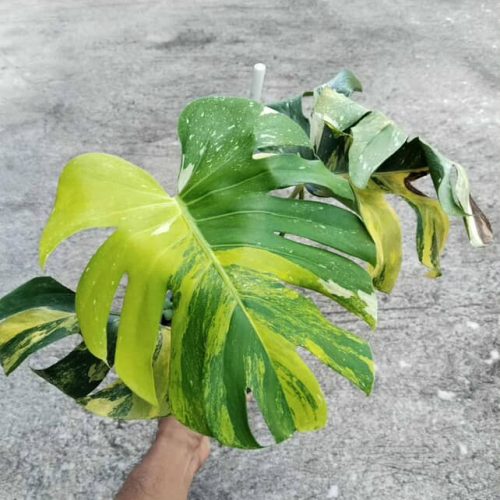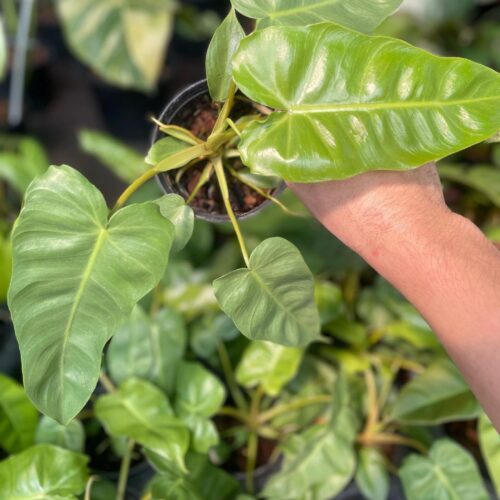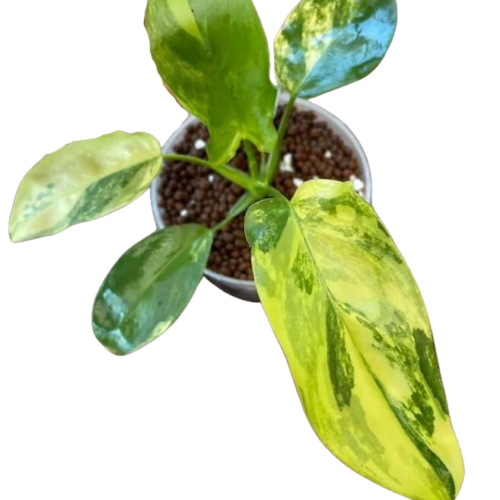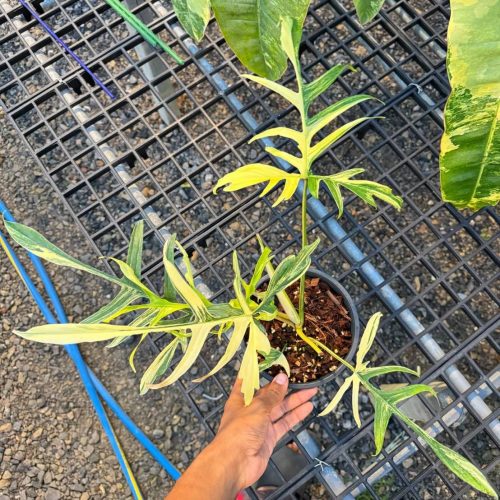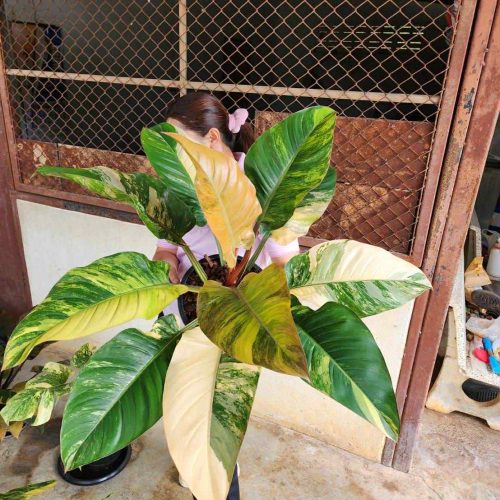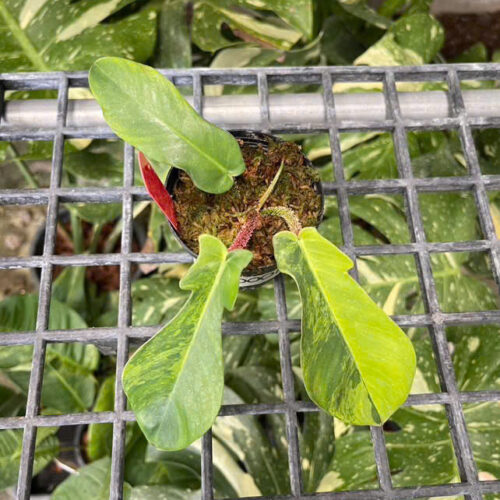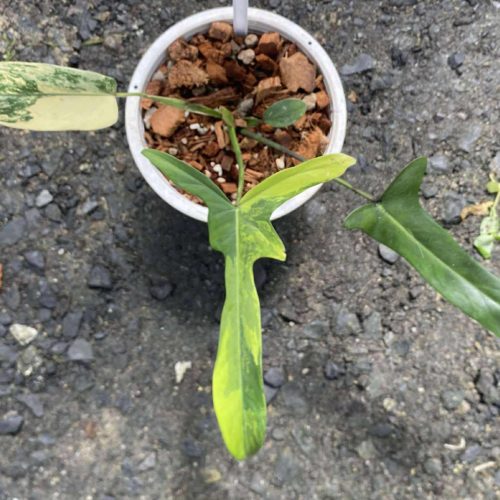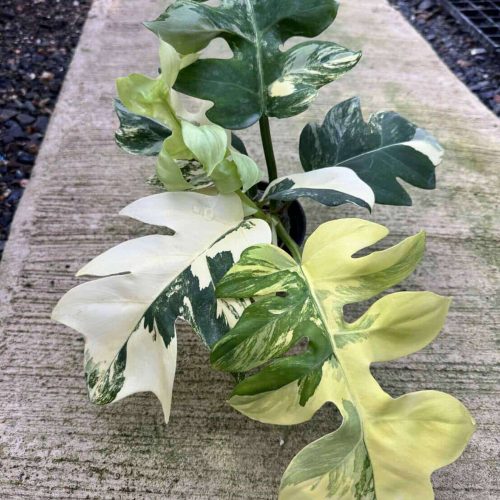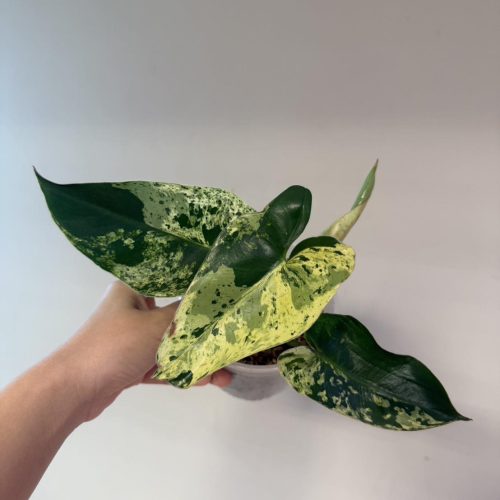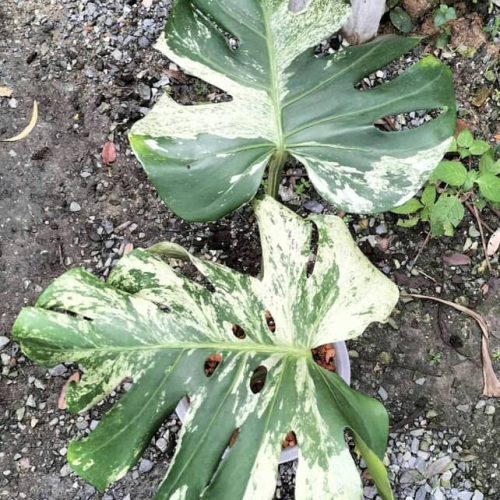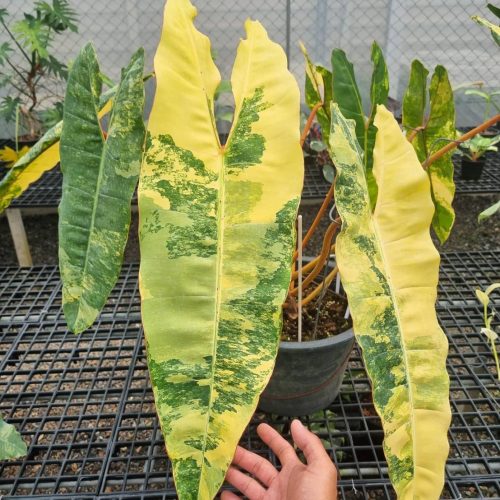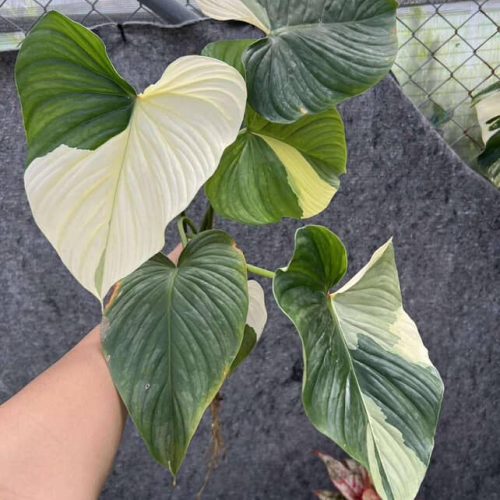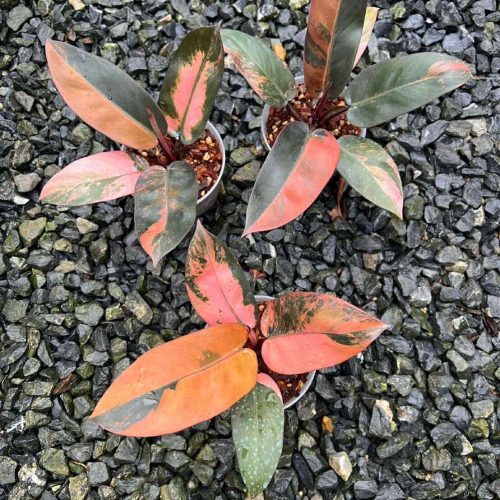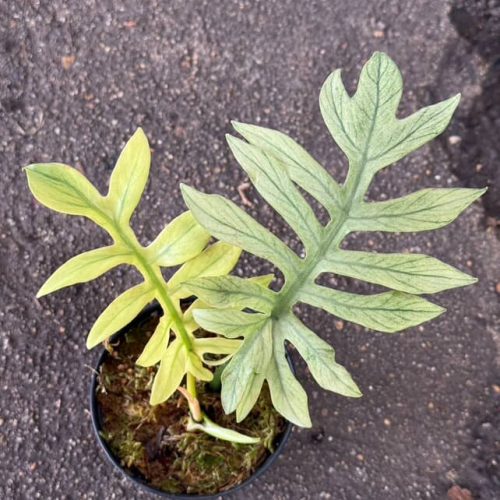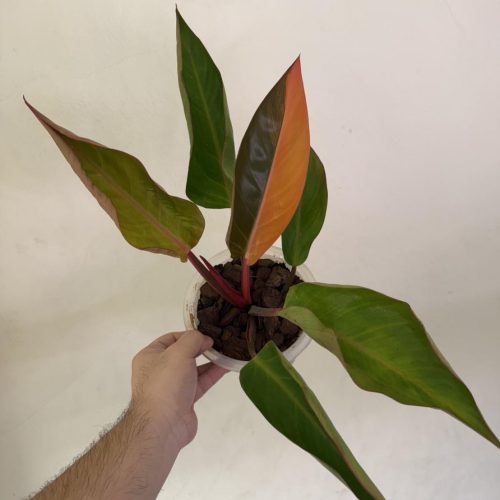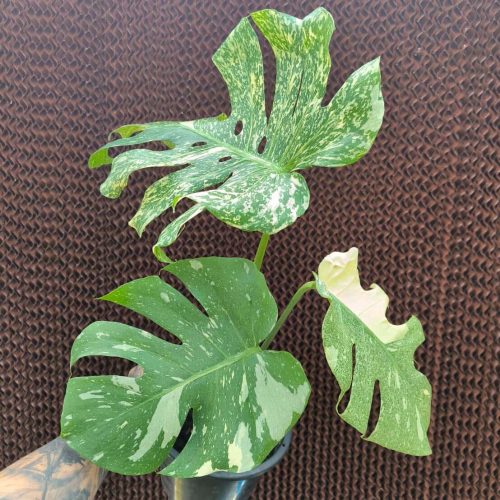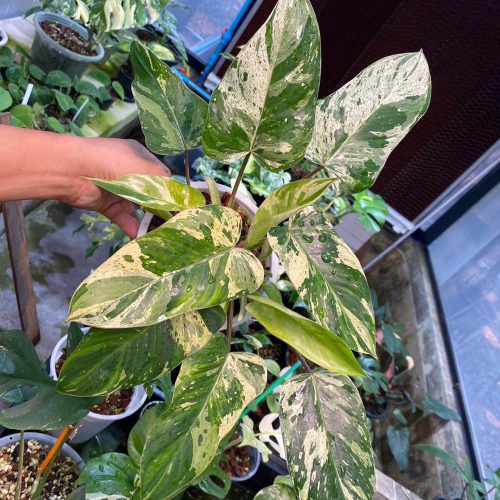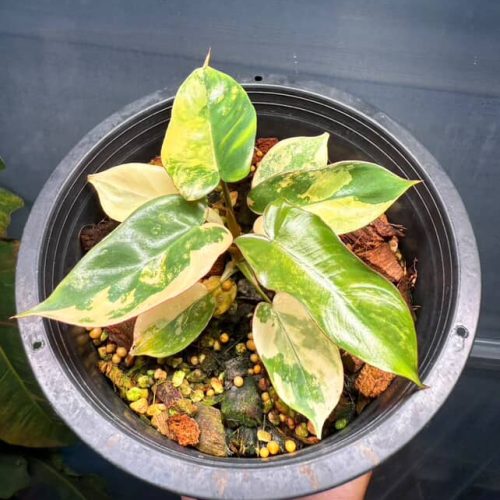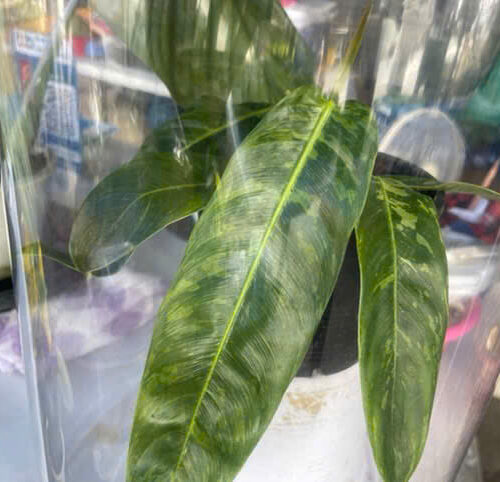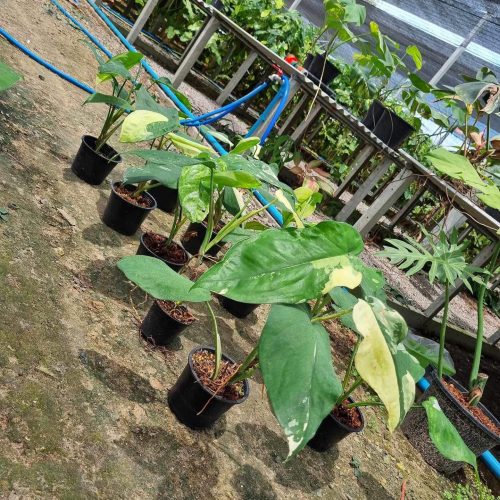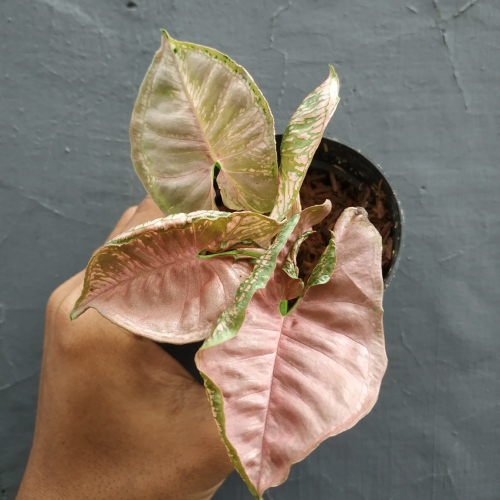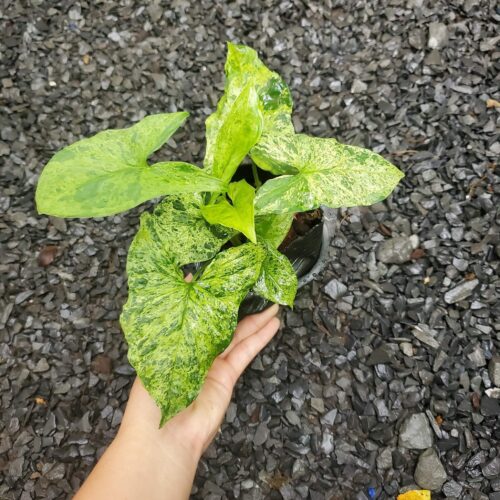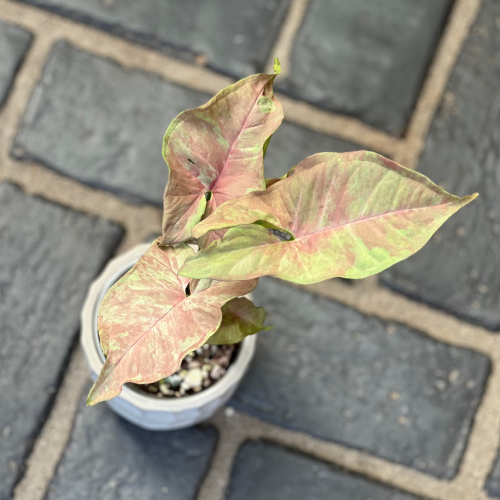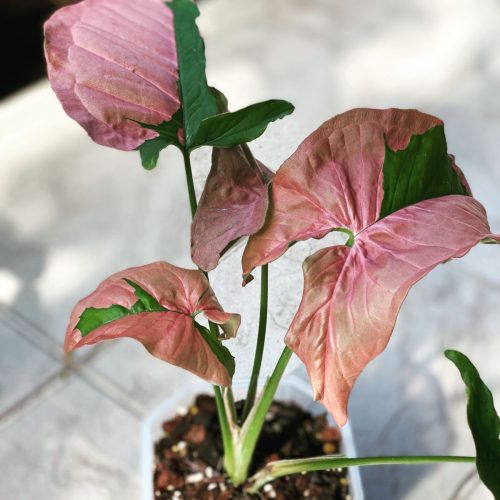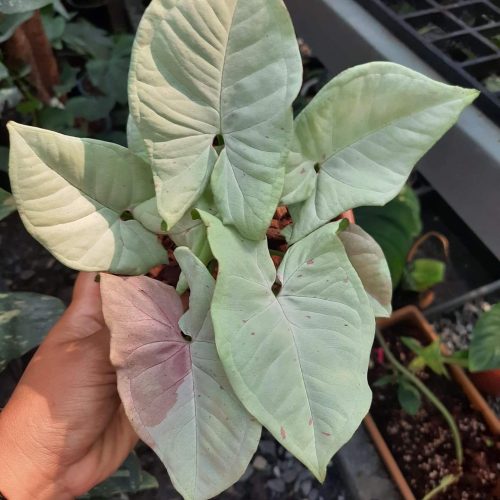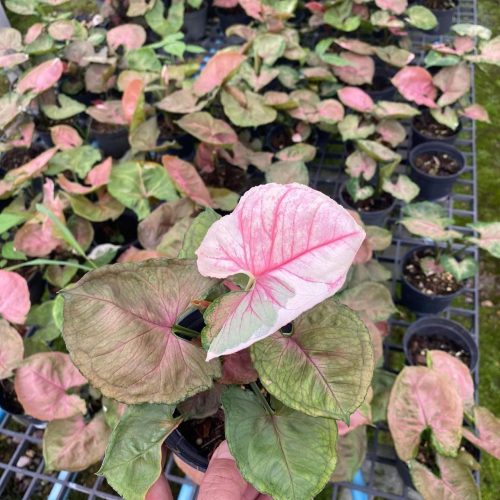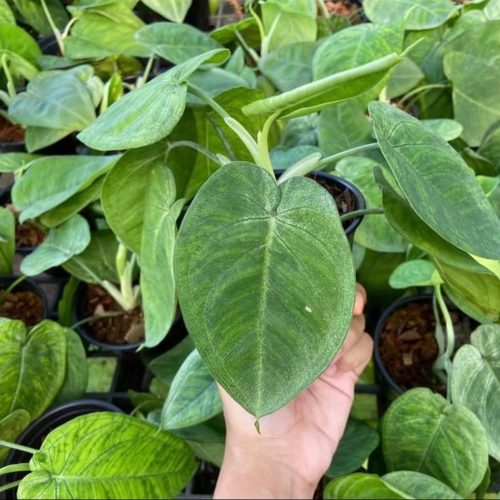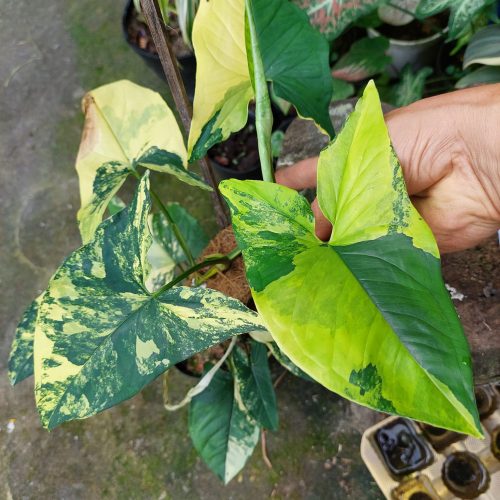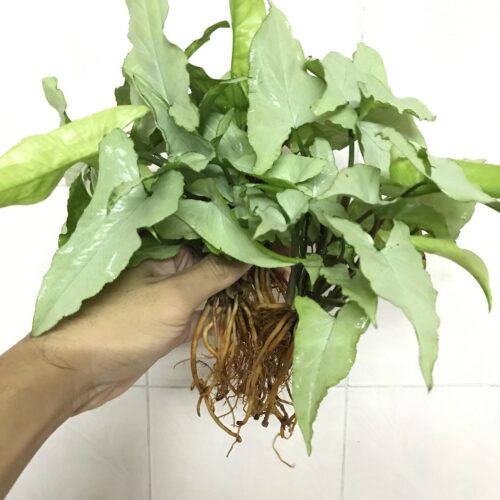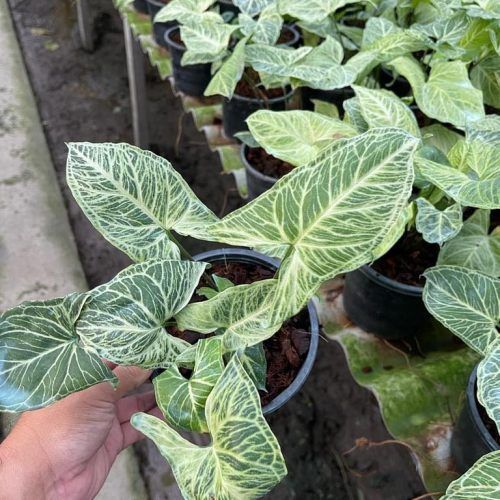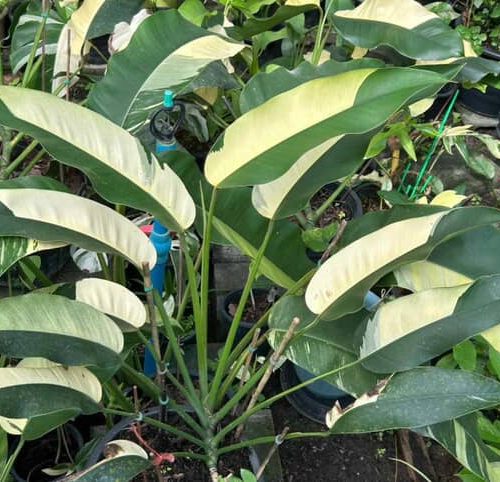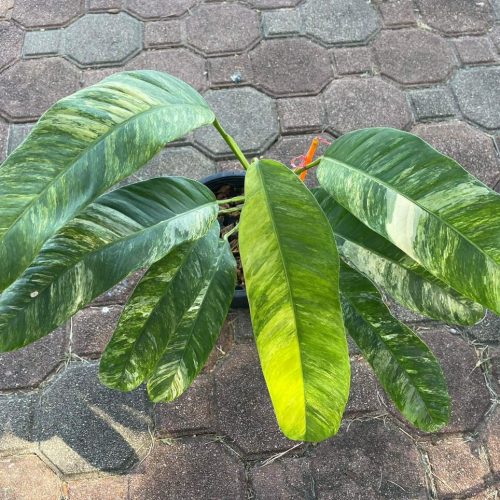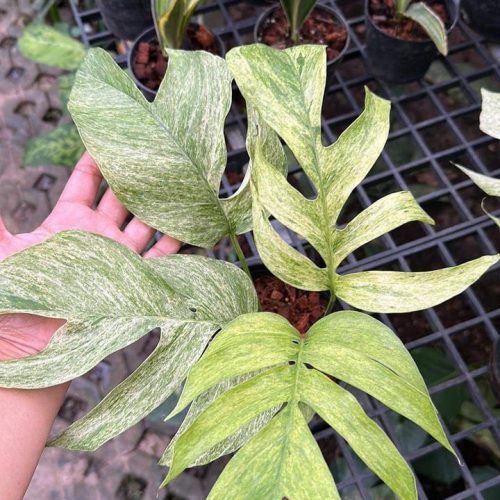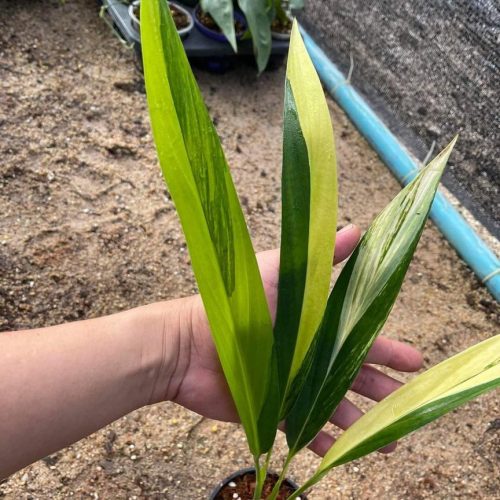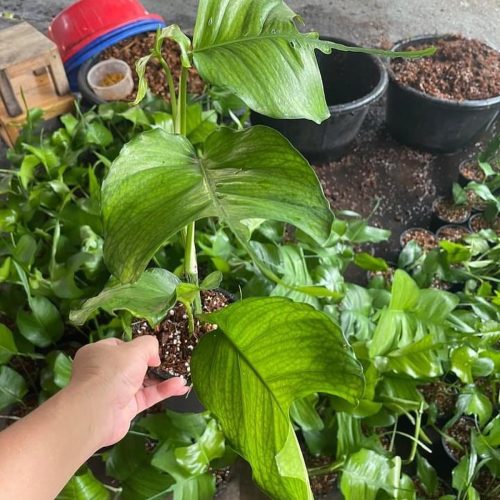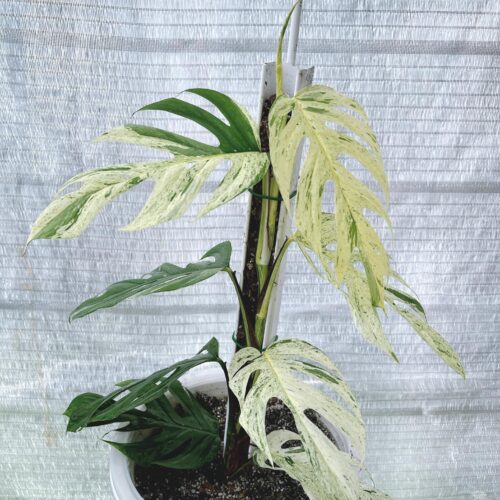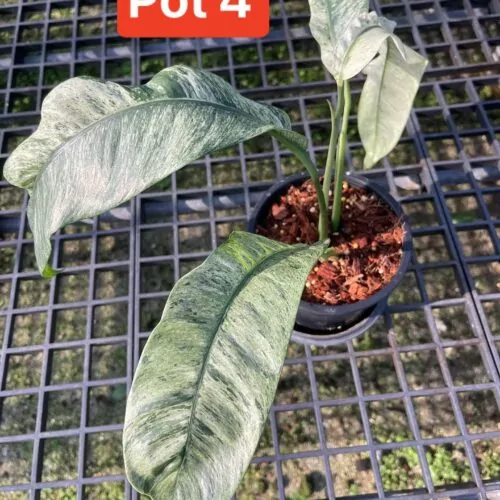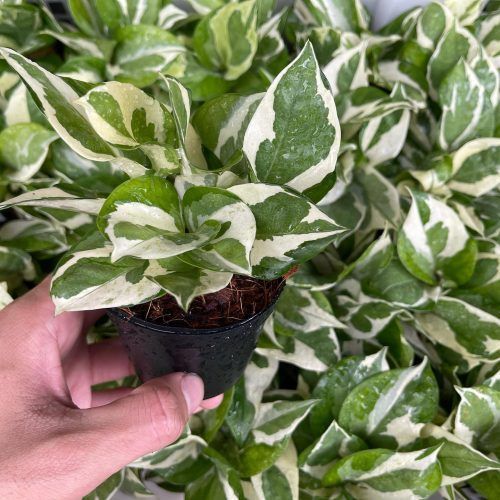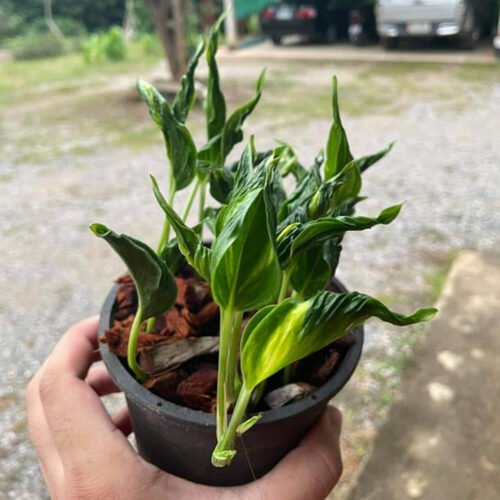The Epipremnum Pinnatum Marble Variegated is a stunning houseplant that brings a touch of elegance to any indoor space with its unique, marbled foliage. This guide will provide you with the essential tips and tricks to grow and care for your Epipremnum Pinnatum Marble Variegated, ensuring it thrives in your home.
Introduction
The Epipremnum Pinnatum Marble Variegated is a member of the aroid plant family, which also includes popular varieties like Philodendron, Monstera, and Anthurium. Native to the tropical rainforests of Southeast Asia, this plant is known for its beautiful variegated leaves that display a mix of green and white marbling. Its vining growth habit makes it perfect for training on a trellis or moss pole, similar to Rhaphidophora and Homalomena.
Origin and Habitat
Epipremnum Pinnatum, also known as the “Marble Variegated,” hails from the rainforests of Southeast Asia. Here’s an interesting fact: in its natural habitat, this climbing vine can reach staggering heights of up to 40 meters! Whoa, isn’t that something?
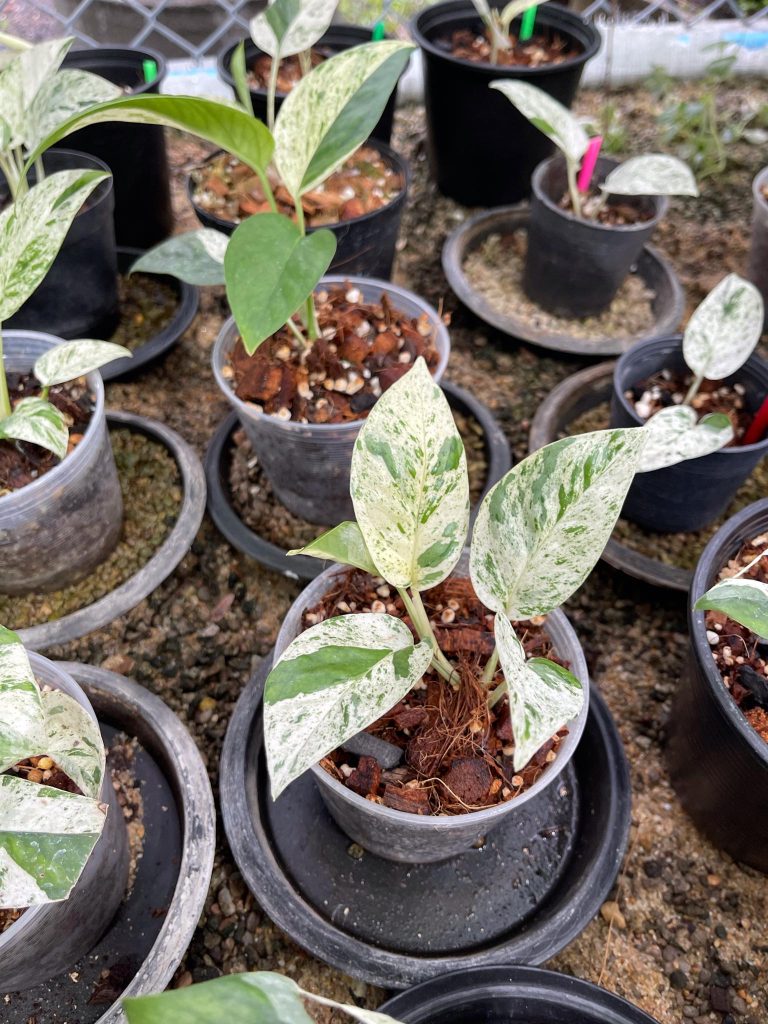
To explore the diversity within the Epipremnum genus and learn about other intriguing varieties, I highly recommend checking out the “5 Stunning Epipremnum Varieties: A Must-See Guide!“. This guide provides an exciting glimpse into the world of these beautiful plants and their various forms.
The Beauty of Variegation
This plant’s splendor lies in its unique leaf pattern, a natural phenomenon known as ‘variegation.’
The Uniqueness of Marble Variegation
The marble variegated has a distinctive cream-white and green leaf pattern, a stunning visual representation that earned it the ‘marble’ nickname. Each leaf is a canvas splashed with a unique pattern, like a work of art.
Variegation: A Natural Phenomenon
But what is variegation? In layman’s terms, it’s nature’s version of tie-dye for plants. It happens when cells in the leaves lose their chlorophyll, creating a patchwork of color that can range from white to yellow and various shades of green. Intriguing, isn’t it?
For an in-depth look at these advantages, don’t miss “10 Incredible Benefits of Epipremnum: Purify Air & Boost Wellbeing!“, where you’ll discover how these plants contribute to a healthier and more vibrant living space.
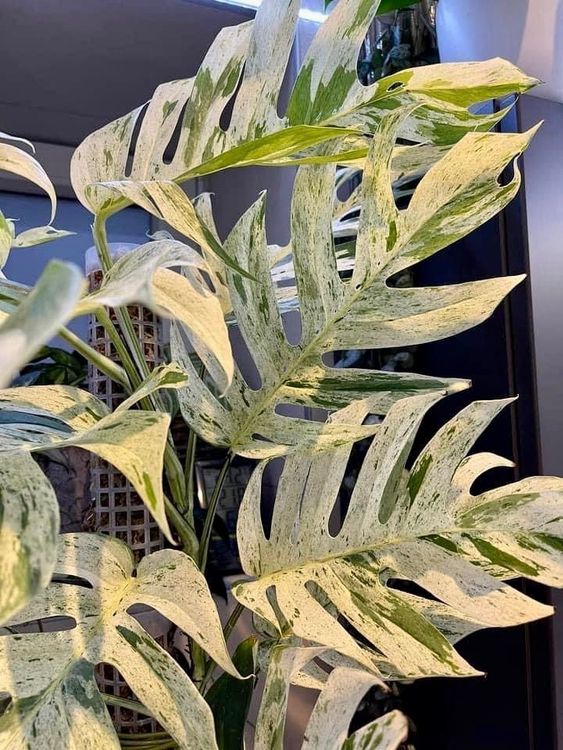
“Unleash the beauty of nature in your home with the Epipremnum Pinnatum Marble. Click here to add this exquisite plant to your collection!”
Caring for Your Epipremnum Pinnatum Marble Variegated
A touch of exotic beauty is all well and good, but how do you care for such a unique plant? Let’s dig in!
Ideal Environment and Lighting
The Epipremnum Pinnatum Marble Variegated thrives in bright, indirect light. Direct sunlight can scorch its delicate leaves, while too little light can cause the variegation to fade. An ideal location is near an east or west-facing window where the plant can receive filtered light.
This lighting condition is also suitable for other tropical plants like Syngonium and Aglaonema.
Proper Watering Techniques
Consistent watering is key to maintaining a healthy Epipremnum Pinnatum Marble Variegated. Water the plant when the top inch of soil feels dry, ensuring the pot has good drainage to prevent root rot.
This plant appreciates high humidity levels, much like Fern (Platycerium) and Dischidia. Increase humidity by misting the leaves regularly, placing a humidifier nearby, or using a pebble tray filled with water.
Fertilizing Your Plant
This plant isn’t too picky about its food, but a good-quality balanced houseplant fertilizer used during the growing season will keep it looking its best.
Pruning and Propagation
Not only does regular pruning keep your Epipremnum Pinnatum looking neat, but the cuttings can also be used for propagation. Talk about recycling, nature’s way!
For expert advice on how to provide the ideal moisture conditions, take a look at “5 Essential Tips to Water Your Devil’s Ivy: Keep Your Epipremnum Thriving!“. This resource offers invaluable tips to help you master the art of watering Epipremnum plants
Epipremnum species are the most sought after by aroid plant lovers
Troubleshooting Common Problems
Despite our best efforts, plants can sometimes run into problems. Here are some common issues:
Yellow Leaves
This can be a sign of overwatering. Check the moisture levels in the soil and adjust your watering schedule accordingly.
Leaf Drop
Often related to a drastic change in temperature or lighting conditions. Ensure your plant isn’t near a drafty window or in direct sunlight.
Slow Growth
This could be due to insufficient light or nutrition. Consider moving your plant to a brighter spot and check if it’s time for a fertilizer boost.

Benefits of Having an Epipremnum Pinnatum Marble Variegated
Not only is this plant a visual delight, but it also purifies the air around you. Plants like this are Mother Nature’s little helpers in creating a healthier living environment. Plus, being surrounded by greenery can boost your mood and reduce stress. Talk about a win-win!
Conclusion
In conclusion, the Epipremnum Pinnatum Marble Variegated is more than just a pretty face. It’s a low-maintenance plant that adds a unique touch of nature’s artistry to your space. Armed with this knowledge, are you ready to welcome this variegated marvel into your home?
Frequently Asked Questions
1. How often should I water my Epipremnum Pinnatum Marble Variegated? It depends on your environment, but generally, water it when the top inch of soil feels dry to the touch.
2. Does Epipremnum Pinnatum Marble Variegated need direct sunlight? No, it prefers bright, indirect light.
3. Can the Epipremnum Pinnatum Marble Variegated be grown outdoors? In tropical and subtropical climates, the Epipremnum Pinnatum Marble Variegated can be grown outdoors in a shaded area. It prefers temperatures between 65°F and 85°F and high humidity, similar to other tropical plants like Colocasia and Zamioculcas zamiifolia (ZZ Plant).
4. Why are the leaves of my Epipremnum Pinnatum turning yellow? Yellow leaves can be a sign of overwatering. Make sure the plant’s soil is moist but not waterlogged.
5. What type of fertilizer should I use for my Epipremnum Pinnatum Marble Variegated? A balanced houseplant fertilizer should do the trick.

